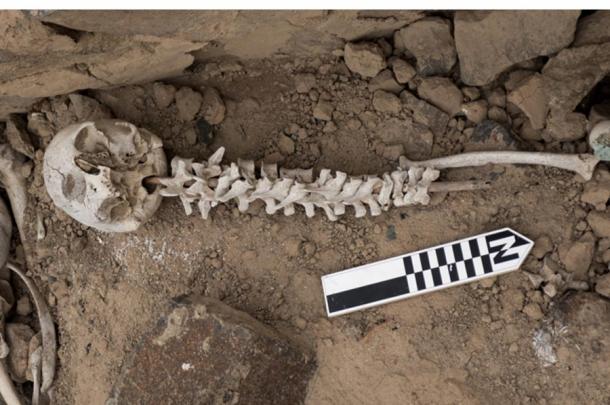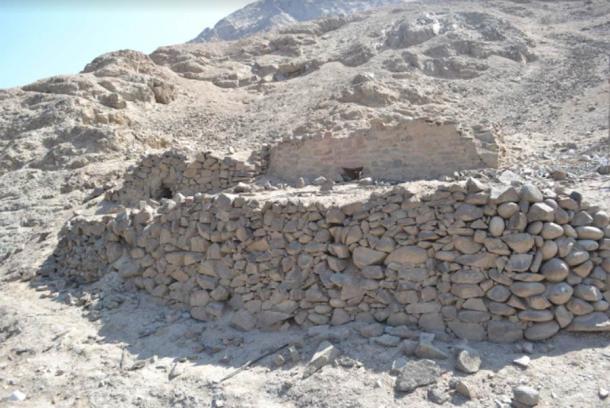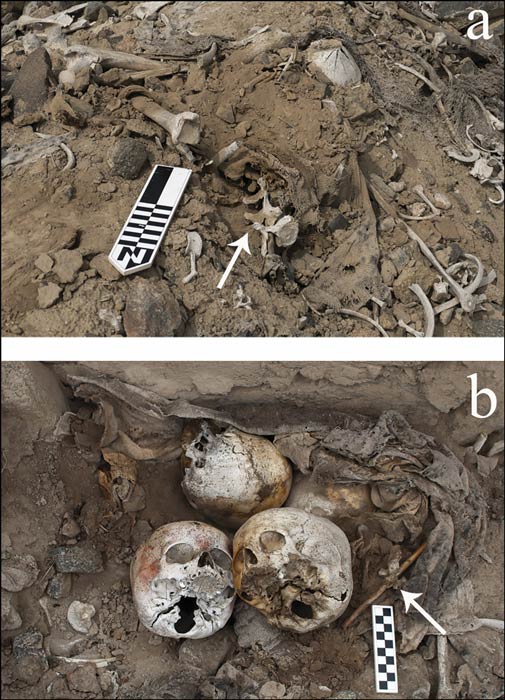The European invasion of the Americas (both North and South) is one of the most destructive colonizing efforts in human history, particularly because of the unimaginable horrors suffered by the native populations of these lands. Apart from pillaging whatever resources they could lay their hands on, the Europeans did not even spare the graves of the deceased. A fascinating new study published in Antiquity reports that the Chincha of Peru tied the spines of the dead onto sticks, using thread, as a means of restoring or dignifying the dead, in a practice previously undocumented in this region!
Lead author Dr. Jacob Bongers, from the University of East Anglia, noted that:
“The idea is that when [the Europeans were looting], they have to go through textile bundles that have these bodies, and so they’re ripping textile bundles, and taking out the gold and silver, and bodies are coming apart. Then local peoples, Chincha peoples, are coming back, seeing this, and trying to put their dead back together.”

Example of a spine on a stick found in the Chinca Valley, Peru. (Jacob L. Bongers / Antiquity Publications Ltd )
The Vertebrate-On-Post Burial Technique in Chincha Valley
Archaeologists working in southern Peru’s Chincha Valley, on the Pacific Coast, found nearly 200 such burials, with deceased human spines tied to posts made of reed. These finds were roughly dated to the 16h century (1450-1650 more specifically), roughly coinciding with the arrival of the Spanish and Portuguese into South America. These ‘vertebrate-on-post’ graves were discovered in elaborate indigenous graves numbering hundreds, called chullpas, reports CNN.
Out of a total of 664 graves uncovered in a 40 square kilometer (15 square miles) radius, 44 mortuary sites in total were discovered, from which 192 graves emerged with the aforementioned burial practice. Scientists then employed a method of radioactive carbon measurement in the bones and the posts to ascertain the date of the burials and the assembly of the posts. A LiveScience report on this explains that ‘radioactive carbon accumulates when an organism is alive but decays to nitrogen at a constant rate once the organism is dead’.
“The fact that there’s 192 of these and that they’re widespread — we find these throughout the Chincha Valley — it means on one level that multiple groups of people coordinated and responded in a shared way, that this interesting practice was deemed the appropriate way of dealing with disturbed bodies of the dead,” added Dr. Bongers.

Two fieldstone chullpas in the middle Chincha Valley (Michael Rosales/ Antiquity Publications Ltd )
The Arrival of the Conquistadores and the Ensuing Destruction
At this point in time, the Inca Empire (estd. in the early 1200s) was crumbling from within, and this decline was exacerbated by the arrival of Pizarro and his conquistadores. Apart from the brutalities of weaponry and warfare that they carried, the conquistadores were able to wipe out huge swathes of the native populations through disease. Initially by accident, the Spanish soon discovered that the indigenous tribes had no immunity and resistance to the ‘Old World’ diseases like measles, smallpox, influenza, to name a few.
This caused a rapid decline of the great civilization, and by 1532, the last Inca stronghold had fallen to the Spanish . Though there were concerted attempts by various leaders of the remaining Inca to organize and expel the Spanish, these proved futile, and by the 18th century, all such efforts vanished.
The Inca Empire was a highly centralized structure, quasi-federal in nature, and the burials were likely performed by the wealthy and the elite, according to Dr. Bongers. He adds that these people formed the upper crust of the wealthy centralized society that dominated the Chincha Valley during the Late Intermediate Period, which just precedes the Inca Empire.
This Chincha Kingdom, which thrived in the period between 1000 and 1400 AD, merged with the Inca by the end of this period, but their population numbers rapidly dwindled – from 30,000 to less than a 1,000 by the time the Spanish had wreaked their onslaught and havoc. To add salt to the wounds, the Spanish ransacked Chincha graves en masse, in search for gold and other valuable artifacts, wantonly destroying these graves.

Skulls and vertebrae-on-posts associated with disturbed textile bundles. (Jacob L. Bongers / Antiquity Publications Ltd )
Graves and the Afterlife: A Cultural Anomaly?
“Looting of Indigenous graves was widespread across the Chincha Valley in the Colonial period. Looting was primarily intended to remove grave goods made of gold and silver and would have gone hand in hand with European efforts to eradicate Indigenous religious practices and funerary customs”, adds Dr. Bongers, whose work has specialized in the study of indigenous burials in this part of the world.
It is likely that the remaining Chincha people revisited these looted graves to reconstruct the scattered remains. After all, Andean cultures pride themselves on their ability to honor the dead through the process of complete preservation. According to the study, the indigenous peoples of the region were involved in devising newer and newer treatments of the dead. The nearby Chinchorro people developed the first known techniques for artificial mummification, much before the ancient Egyptians practiced this funerary rite!
In all cultures in the world, the way the departed are treated is a marker of that society and culture’s prowess. It is also true that in almost all conflict-ridden areas, looting and plundering armies have seen to dishonor the dead of another community, in a way to assert power and supremacy. This is likely what was playing out in medieval Peru, with the arrival of the Spanish conquistadores.
“When you look at all data we gathered, all of that supports the model that these were made after these tombs had been looted. Ritual plays important roles in social and religious life, yet can become contested, especially during periods of conquest in which new power relationships become established. These finds reinforce how graves are one area where this conflict plays out”, concludes Dr. Bongers.
Top image: Examples of the Chincha spines on sticks. Source: C. O’Shea / Antiquity Publications Ltd
By Sahir Pandey


